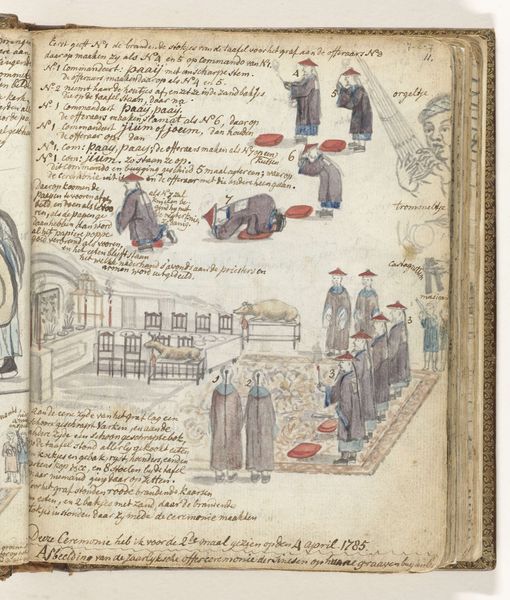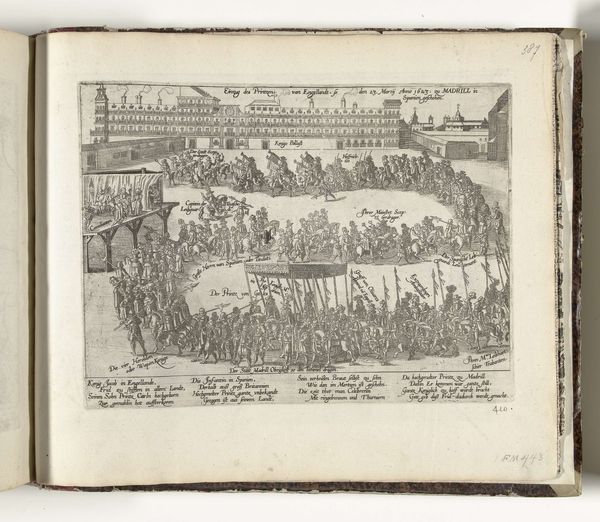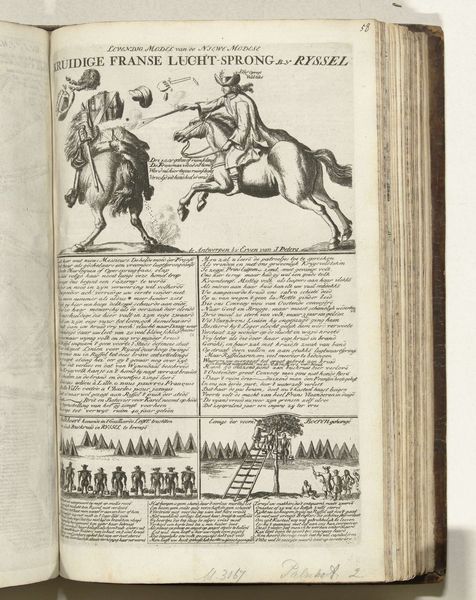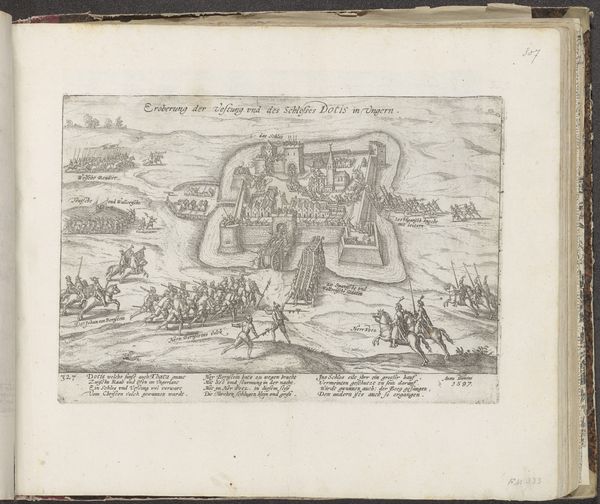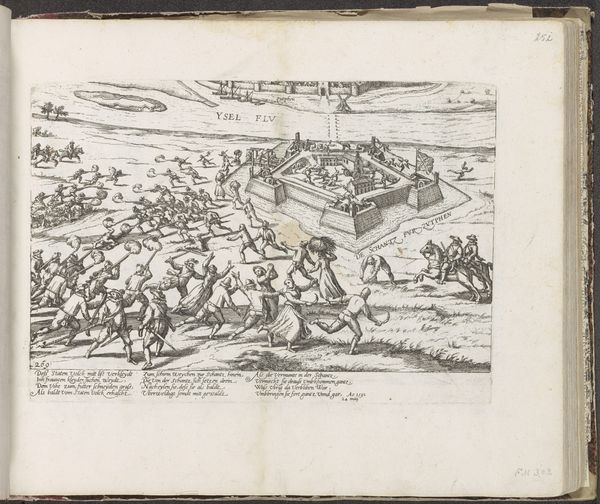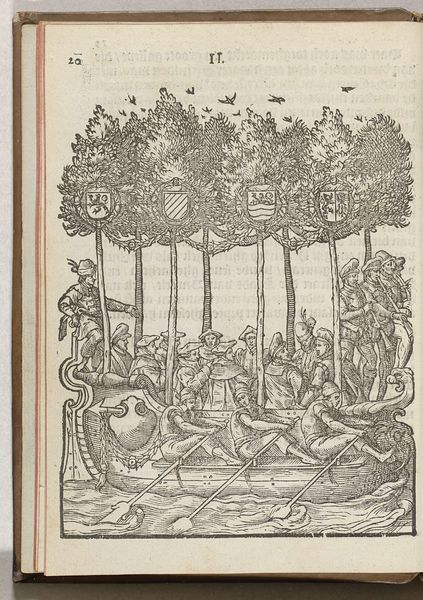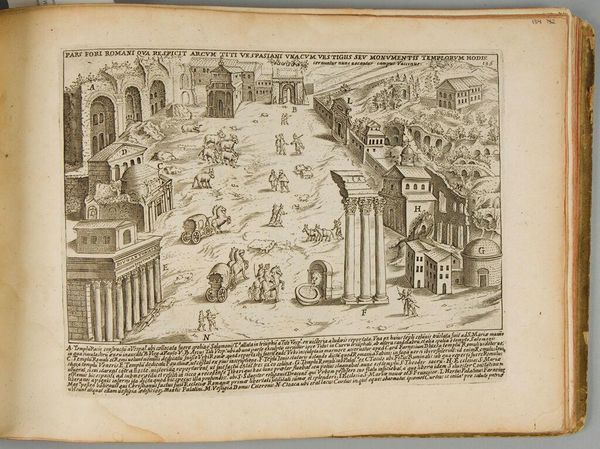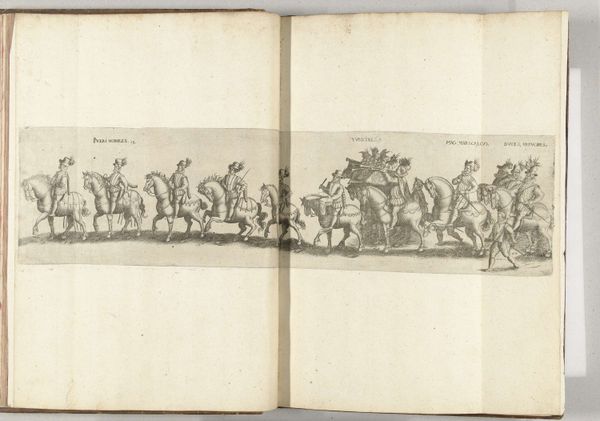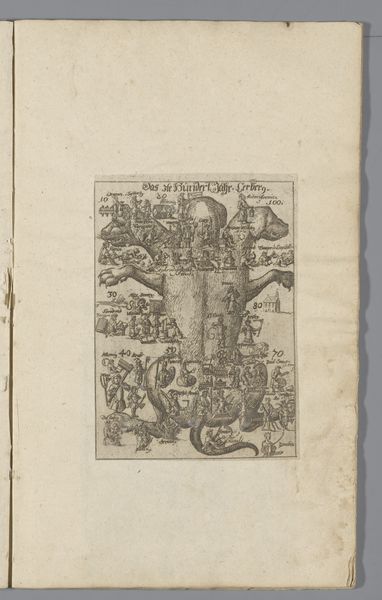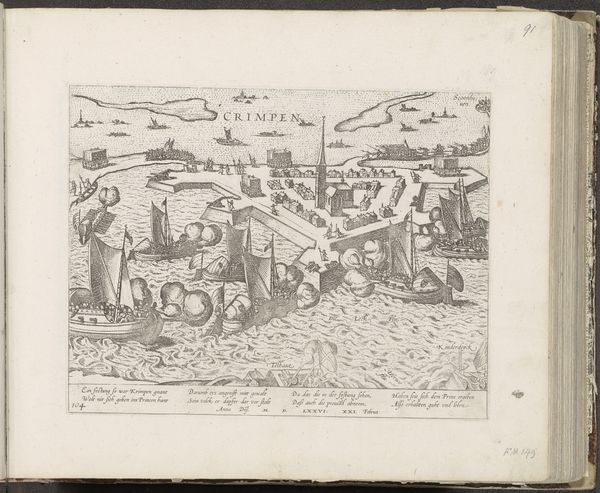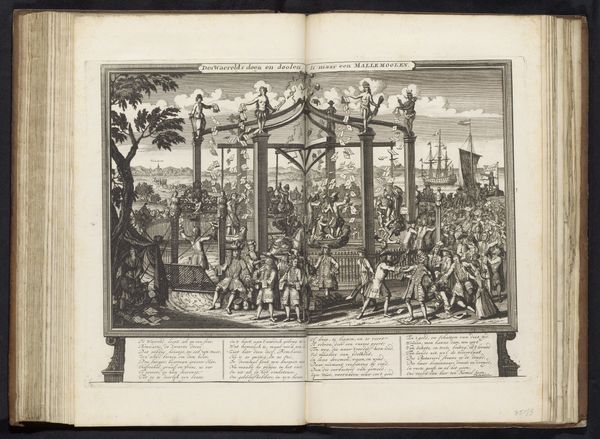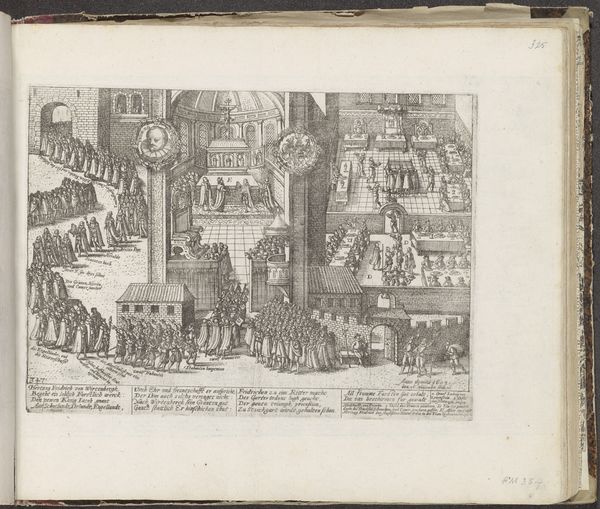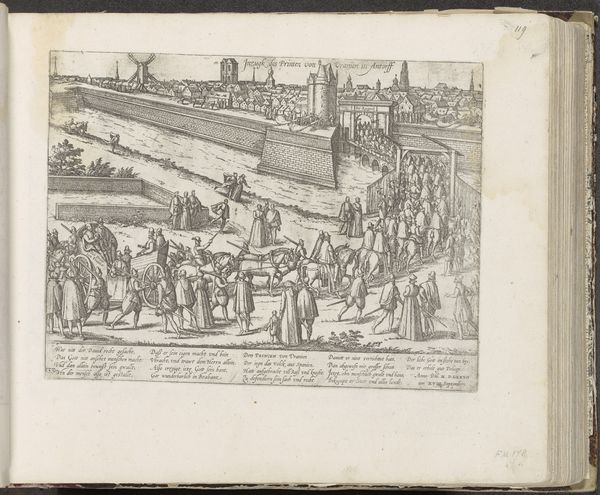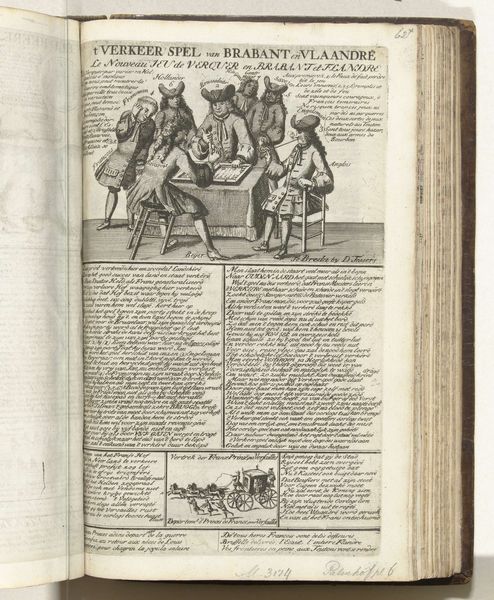
A Bound Elephant being led from the Last Section of the trap, the Prison Corral 1785
drawing, coloured-pencil, paper, watercolor
drawing
coloured-pencil
landscape
figuration
paper
watercolor
coloured pencil
orientalism
15_18th-century
watercolour illustration
history-painting
Dimensions: height 195 mm, width 155 mm
Copyright: Rijks Museum: Open Domain
Curator: Let’s look closely at this work by Jan Brandes, “A Bound Elephant being led from the Last Section of the trap, the Prison Corral," made in 1785. It appears to be watercolor and coloured pencil on paper. It's interesting to see elephants being controlled this way...what catches your eye? Editor: I’m really struck by the juxtaposition of the crude wooden structure, the corral, with the sensitive rendering of the elephants. What materials would have been available to Brandes at the time, and how would he have obtained them? I'm curious about the materiality of this whole scenario. Curator: Excellent question! Consider the paper itself – likely handmade, from a source dependent on location and trade routes. The pigments too, would have specific geographical origins and related costs. But look closer— isn't the capture of these animals, their bodies as a raw resource, just another form of extraction within the context of colonial power? The ropes, the timber, all tools to exploit both labor and animal. What do you think of that connection? Editor: I hadn't thought of the elephants as a "resource" in the same way as the wood! That's unsettling, but it reframes the whole scene. Are those figures constructing the corral or tightening the ropes exploiting their own local natural resources, or under command from someone else, procuring these resources as they are instructed? Curator: Precisely! Consider Brandes' role here. He is a witness documenting this process. The act of drawing and using such specific materials further embodies the colonial project— converting experience into a consumable commodity. Does seeing it that way change your initial reading of the work? Editor: Absolutely. I initially saw it as a simple, if somewhat sad, historical depiction. Now, I see the web of materials, labor, and power relations involved in its creation, and the complicated message it conveys about 18th-century colonialism. Thanks for showing me how to examine all the layers involved! Curator: It's crucial to examine the conditions of artistic creation and consider what implications an artwork presents as a historical document. Considering what’s *in* the artwork as physical resources is key to broader critical insight!
Comments
No comments
Be the first to comment and join the conversation on the ultimate creative platform.
